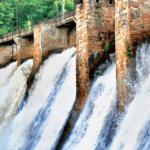Of the 189 countries listed in the ‘Doing Business Index’; an indicator of ease of doing business in different economies, Nepal’s rank fell by five positions from 94 in 2015 to 99 in 2016. When compared to the low income nations and economies in the South Asian continent, the drop in ranking was observed to be one of the highest. This drop is especially significant given that almost two-thirds of low income nations have recorded an increase in their positions on the index.
The doing business index measures 10 areas of the business life cycle, of which Nepal recorded a decline in rank in six areas in 2016 as compared to 2015. Meanwhile rankings in two areas increased, whereas two remained unchanged.
Improvements in ranking
“Dealing with construction permits” and “Registering Property” recorded improved rankings. The former markedly ranked seven places higher than 2015 at 78th position, while the latter grew marginally by one place at 72nd position. Further, it can be observed that indicators for registering property such as the number of procedures, the time taken to complete procedures and costs are significantly lower than the South Asian average, with some even comparable to the OECD high average income economies.
In case of “Dealing with construction permits”, the indicators such as the cost of dealing with construction permits (recorded as a percentage of the warehouse value) decreased from 9.4% to 8.3%, whereas, in the area of “Registering property” there were no changes in its indicators. Therefore, in terms of actual improvement perhaps little has been achieved as the increase in ranking could more likely be a result of the new quality index that was introduced in the current methodology, especially in “Dealing with construction permits”.
Unfortunately, Nepal has failed to improve on the quality indices in both of the areas. Especially in regard to the quality of the land administration index. Nepal has persistently scored on the lower side in terms of reliability of infrastructure, transparency of information, geographic coverage and land dispute resolution.
Decrease in rankings
Areas that recorded a significant drop in rankings include “Resolving Insolvency” and “Getting credit”. Apart from this, the lower ranking areas include “Enforcing contracts”, and “Getting Electricity”. Within the area of “Resolving Insolvency”, it is interesting to note that despite the indicators showing no change compared to 2015, and having better scores than the South Asian average, ranking fell by eight places to 86th position. This perhaps suggests the improved performance of other nations as opposed to decline in Nepal’s performance.
However, areas such as “Getting credit” and “Getting Electricity” rank among the lowest in South Asia, scoring the absolute minimum in indices such as depth of credit information, credit registry coverageand reliability of electricity supply and transparency of tariff.This implies that the rules and practices affecting the coverage, scope and accessibility has been poor; there is a severe lack in terms of a private credit bureau, credit information of individuals and firms borrowing history. There is also a persistent prevalence of high duration and frequency of power outages with poor tools to monitor power outage, restore power supply, and financial deterrents aimed at limiting outages, as well as inadequate regulatory monitoring and relatively opaque and inaccessible tariffs.
In regard to “Enforcing contracts”, it can be observed that the duration to resolve disputes on average takes about two and half years, almost six times more than the lowest dispute resolution time, along with the prevalence of inefficient judicial processes.Such inefficiencies can largely be attributed to hassles in trail and judgment proceedings, prolonged duration in enforcing judgment, and poor case management and court automation.
The comparisons however do not provide absolute changes in rankings, and thereby performance, as Doing Business Index updates certain methodologies and makes necessary modifications, additions and retractions of indices. Nonetheless, the comparisons do provide a certain benchmark to assess the ease of doing business.
Looking ahead, the trends seem discouraging as the low ranking areas do not appear to be showing signs of progress, but rather have performed worse than in previous years. This further points to the increasing difficulty for local entrepreneurs to open and run small to medium-size businesses meanwhile also complying with the relevant regulations. Given the prevalence of distressing economic turmoil in current times, the ease of doing business has plummeted down to the lowest.





